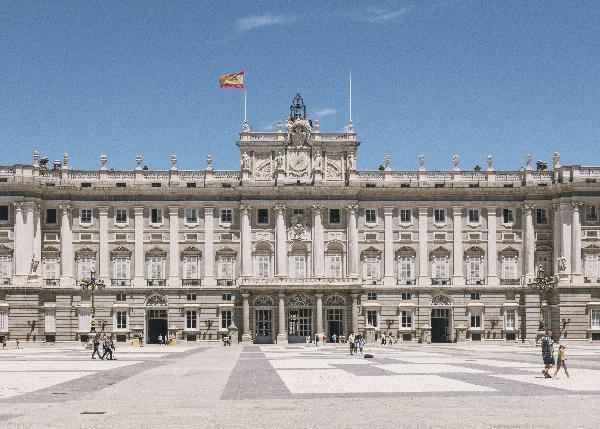Exploring the Majestic Royal Palace of Madrid

Strong 8k brings an ultra-HD IPTV experience to your living room and your pocket.
The Royal Palace of Madrid, or Palacio Real de Madrid, stands as a stunning testament to Spain's rich historical and architectural heritage. Located in the heart of Spain's capital, this grand structure has been the official residence of the Spanish royal family since the 18th century. With its opulent design and intricate details, it’s a must-see for anyone interested in European history and architecture.
The Royal Palace of Madrid is an architectural marvel and one of the largest palaces in Europe. Its construction began in 1738 under the orders of King Philip V, and it was designed by the renowned architect Filippo Juvarra, later continued by other architects. The palace is a splendid example of Baroque architecture, characterized by its grandeur and elaborate decorations. The building boasts more than 3,000 rooms, each meticulously adorned with lavish furnishings and art. As you wander through the palace, you’ll encounter exquisite examples of craftsmanship, including the impressive throne room, the grand staircase, and the lavish Royal Chapel.
Not only is the Royal Palace a symbol of Spain's royal heritage, but it also serves as a cultural and historical hub. The palace houses a vast collection of art, including works by renowned artists such as Goya and Velázquez. The Royal Armoury, another highlight, displays an extensive collection of historical weaponry and armor, providing a fascinating glimpse into Spain's military history. Visitors can explore the palace's rich interiors, from the richly decorated salons to the serene gardens, each offering a unique insight into the grandeur of Spain's past.
One of the most striking features of the Royal Palace is its exterior. The façade is adorned with beautiful sculptures and columns, showcasing the skill and artistry of the architects and builders. The palace's location on a hill overlooking Madrid provides stunning views of the city and its surroundings, making it a picturesque landmark. The expansive Plaza de Oriente in front of the palace is a popular spot for tourists and locals alike, offering a space to relax and take in the impressive architecture.
Visitors to the Royal Palace can also enjoy the beautifully landscaped Sabatini Gardens and Campo del Moro Gardens, which provide a peaceful escape from the bustling city. These gardens are perfect for a leisurely stroll, offering a chance to appreciate the palace's exterior and surrounding natural beauty.
In addition to its architectural and historical significance, the Royal Palace of Madrid is also a vibrant cultural center. It hosts various events and ceremonies, including state banquets and official receptions, reflecting its ongoing role in Spanish public life. The palace's rich history and its role in contemporary Spanish culture make it a fascinating destination for anyone interested in exploring the legacy of Spain's monarchy.
The Royal Palace of Madrid is more than just a historical site; it's a living monument to Spain's royal legacy and artistic achievements. Whether you're an architecture enthusiast, a history buff, or simply a curious traveler, the palace offers a captivating experience that brings Spain's regal past to life. The grandeur of the Royal Palace of Madrid is a reflection of the country's rich heritage and its enduring connection to its royal history.
Note: IndiBlogHub features both user-submitted and editorial content. We do not verify third-party contributions. Read our Disclaimer and Privacy Policyfor details.


